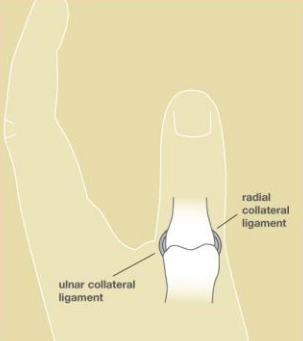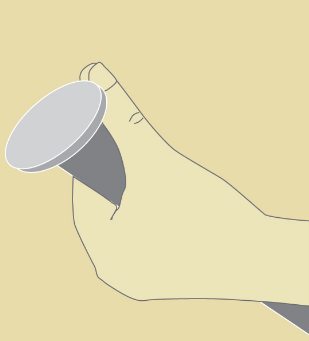Sprained Thumb

A sprain is an injury to a ligament, which is a soft tissue that connects bones to each other at joints.
The most common ligament to be injured in the thumb is the ulnar collateral ligament. This helps connect the thumb to the hand on the side near the index finger. It allows the thumb to act like a post. Injury to this ligament is sometimes called “skier’s thumb” because it is a common injury from a ski pole. The radial collateral ligament is on the other side of the thumb. It can tear, but this is not as common as a tear on the ulnar side. See Figure 1 to view both ligaments.
Causes
A sprained thumb is common in sports and falls when the thumb is either jammed into another player, the ground or a ball, or when the thumb is bent into an extreme position. One or more ligaments can tear (Figure 2).

Signs and Symptoms
With a sprained thumb, the thumb or hand usually swells and may bruise. Pain might last for only a week or two. After that, the usual problem is function. You might have trouble writing, turning a doorknob, or holding a drinking glass. Sometimes this is felt as pain and sometimes weakness.
Treatment
In diagnosing a sprained thumb, x-rays can show whether the bones of the thumb and hand are broken. Your hand specialist will examine the thumb to determine whether the ligament is torn. Some tears can be treated using a splint or a cast. Other tears need to be fixed surgically.
If the injury is chronic, the ligament might not be able to heal even with treatment. In these cases, a new ligament sometimes is created using a tendon. If there is arthritis at the joint, fusing the joint so that it does not move at all might be the best option.
